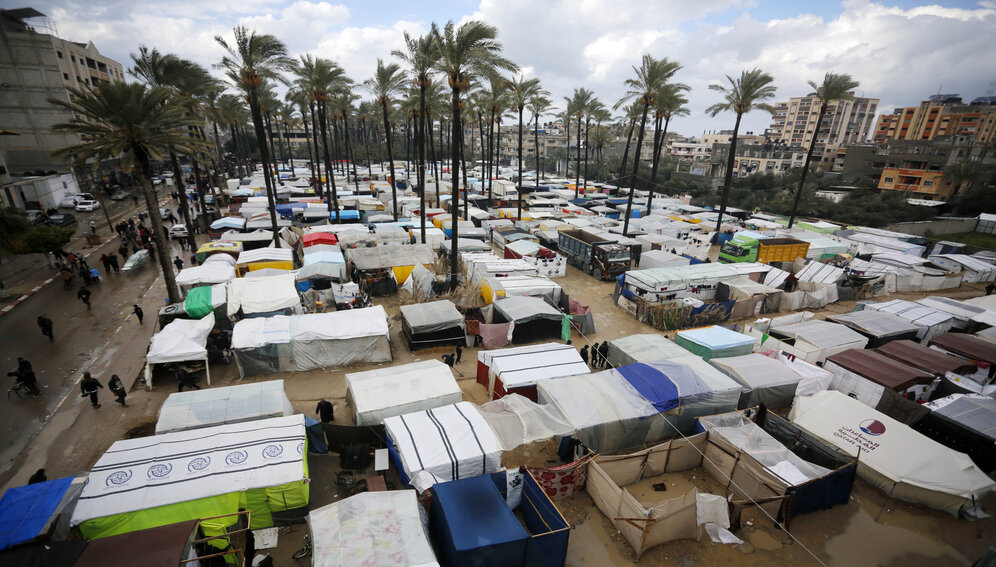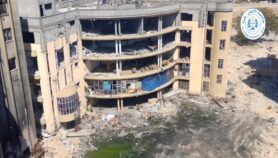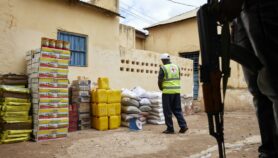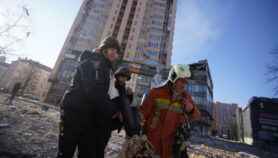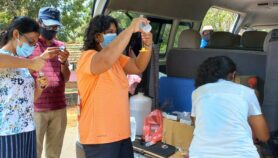By: Qais Darwish and Amr Rageh
Send to a friend
The details you provide on this page will not be used to send unsolicited email, and will not be sold to a 3rd party. See privacy policy.
[RAMALLAH / CAIRO] Health officials in Gaza are growing increasingly concerned about the spread of disease among displaced communities in the besieged enclave.
Doctors have reported hundreds of thousands of cases of Hepatitis A, a senior WHO representative told SciDev.Net, as well as widespread outbreaks of diarrhoea and other illnesses common among children.
WHO regional director for the Eastern Mediterranean Ahmed Al-Mandhari said there was “a need to open all crossings and send huge field hospitals as soon as possible” as doctors grapple with shortages of antibiotics and other medicines.
“The sewage plants were out of service due to power cuts, which led to the overflow of sewage between the tents, and the displaced had to rely on seawater for washing.”
Khalil Al-Dakran, spokesman, Al-Aqsa Martyrs Hospital, Gaza
Khalil Al-Dakran, spokesman for the Al-Aqsa Martyrs Hospital in Gaza, told SciDev.Net: “Every day, we wait for a new epidemic to spread.”
Around 1.9 million people – 85 per cent of the total population – have been displaced since the Gaza Strip came under bombardment from Israel in October last year, following attacks and hostage-taking by Hamas militants in Israel.
Many of the displaced have sought refuge in shelters provided by the UN Relief and Works Agency for Palestine Refugees in the Near East (UNRWA).
However, areas sheltering the displaced are becoming overcrowded and lack clean water, food and electricity, raising the risk of dangerous epidemics spreading, explains Al-Dakran.
In January, WHO director-general Tedros Adhanom Ghebreyesus said 24 cases of Hepatitis A had been confirmed, while there were “several thousand” suffering from jaundice, likely linked to the disease.
Doctors in Gaza now believe there are about 7,500 possible cases of Hepatitis A, Al-Mandhari told SciDev.Net.
He said medics had informed the WHO that about 224,000 people in areas sheltering the displaced were infected with upper respiratory tract infections. About 159,000 were reported to have diarrhoea – around half of them children under the age of five – while around 69,000 had lice and scabies and 66,000 chickenpox.
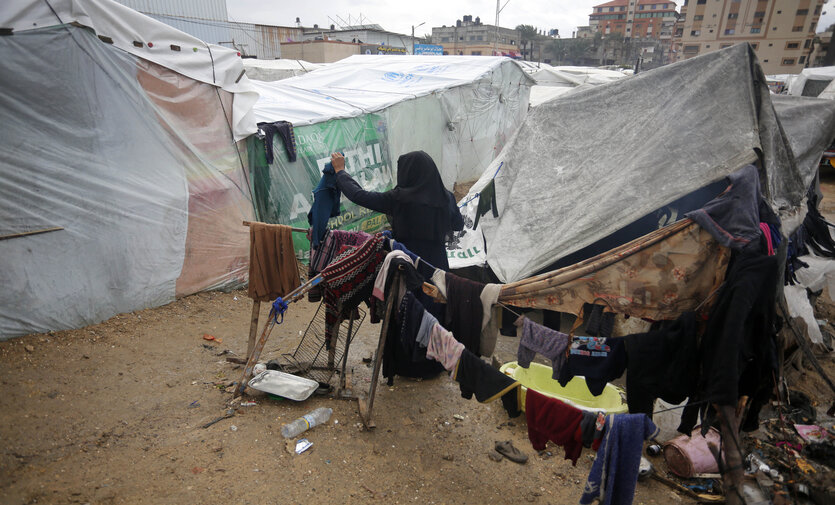
1.9 million displaced people inside the Gaza Strip face harsh weather conditions, without the basic necessities of life.
SciDev.Net
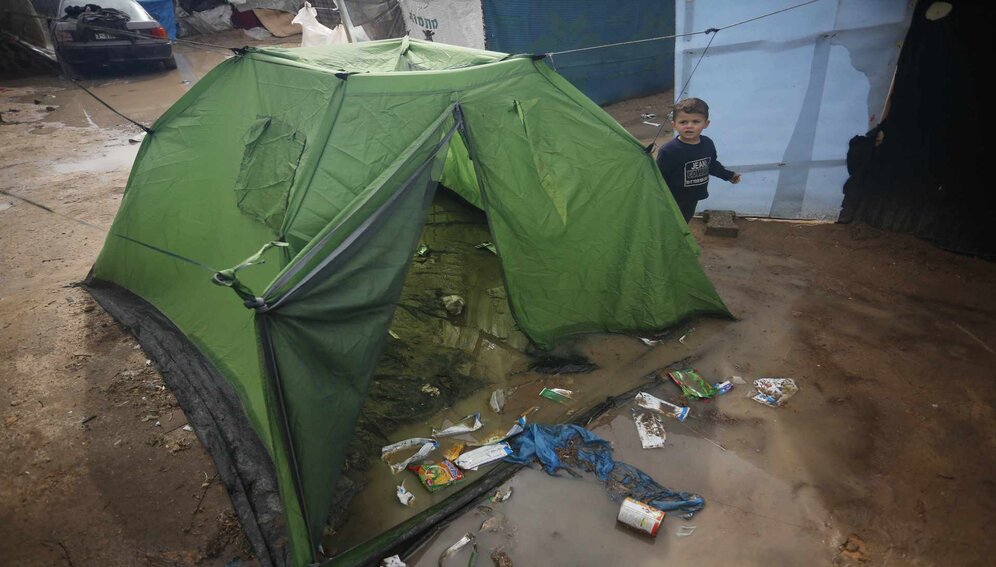


Internally displaced peoples (IDP) camps are not suitable for winter weather, as they flood in heavy rains, while wind causes destruction.
SciDev.Net
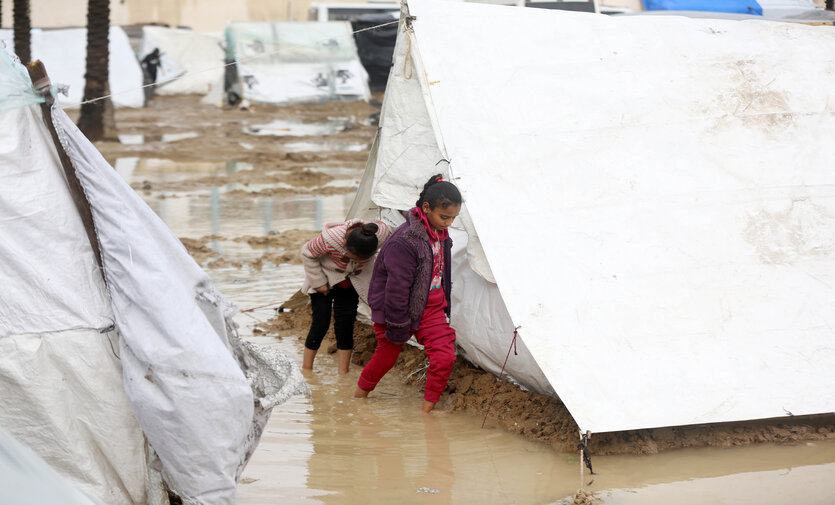


Movement between the camps is made difficult due to the puddles of water left by heavy rains.
SciDev.Net
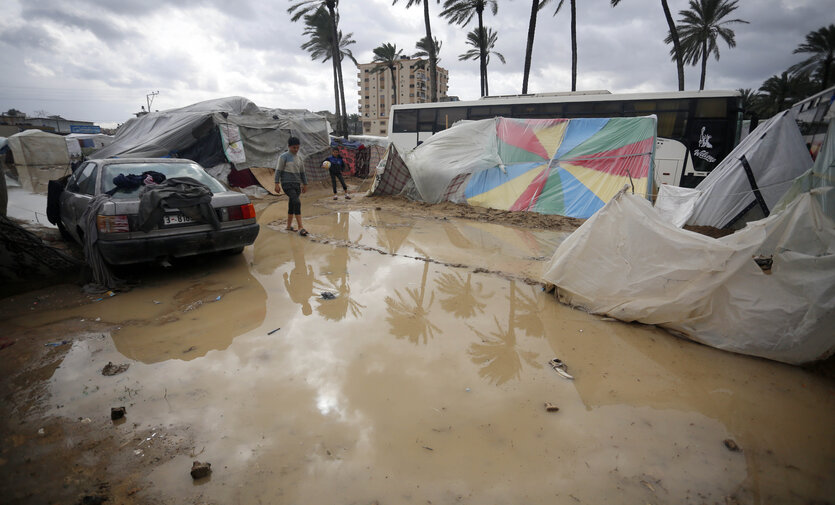


Residents are forced to create paths made of mud and bricks to facilitate their movement through the ponds of flooded camps
SciDev.Net
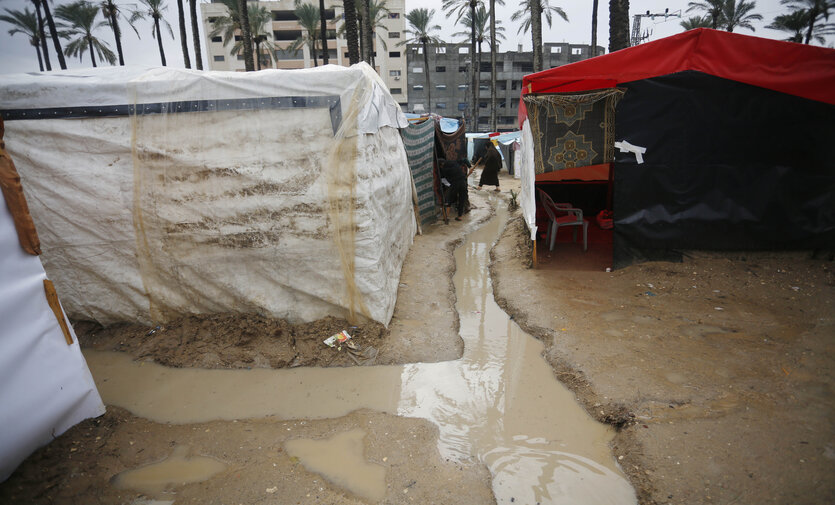


They dig channels around the tents to drain the rainwater, with the aim of protecting themselves from flooding
SciDev.Net
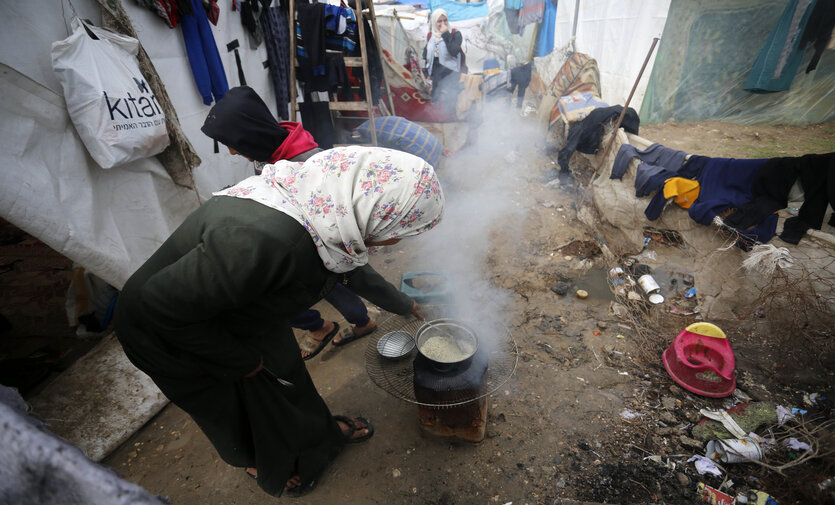


Gaza mothers struggle to feed their children, amid the scarcity of fuel and food.
SciDev.Net
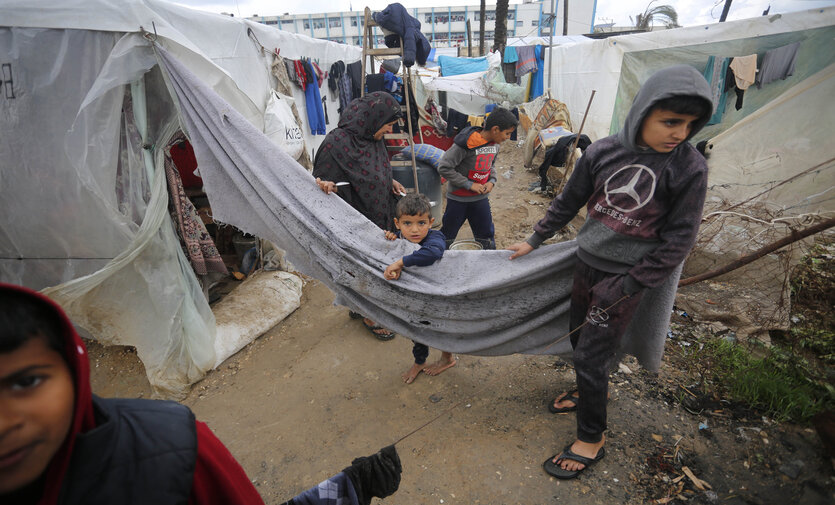


The suffering of children is indescribable. They are deprived of basic necessities of life such as food, clean water and decent sleeping arrangements.
SciDev.Net
Hepatitis A is a viral disease caused by eating contaminated food and water or coming into direct contact with an infected person. Its symptoms include fever, diarrhoea and jaundice, and it can be fatal.
Tedros attributed the high prevalence of Hepatitis A in Gaza to “inhumane” conditions, including “the absence of clean water and latrines” and said there was limited capacity to respond to the disease.
Al-Dakran said the lack of laboratories and diagnostic tools was making epidemiological detection extremely difficult and exacerbating the health situation.
“Doctors diagnose patients randomly, patients mix with healthy people without the slightest restrictions, and with internet and communications cut off, it is difficult to guide the public,” he explained.
‘No safe drinking water’
“The sewage plants were out of service due to power cuts, which led to the overflow of sewage between the tents, and the displaced had to rely on seawater for washing,” Al-Dakran added.
Gazans are having to rely on untreated well water, which they transport using non-sterile pots, he said, adding that they cannot boil it due to the absence of fuel.
“[There is] no safe drinking water,” he said.
A report by the Euro-Mediterranean Human Rights Monitor published in January found that the people of Gaza and the north were facing a catastrophic shortage of drinking water, after Israel cut off water supplies, bombed wells, and blocked fuel supplies, which are needed to operate water conversion and distribution plants.
Only eight litres of water are available per person per day, compared to 100 litres before the current crisis, and this share drops to 1.6 litres in shelters, Al-Mandhari said, citing UNRWA estimates.
The Monitor noted that many parents boil water on wood fires in an attempt to sterilise it and make it drinkable, especially following the outbreak of diseases, including frequent cases of colic and diarrhoea among children.
Al-Dakran said that infant formula – the only source of nutrition for babies in the absence of food and water needed to produce breast milk – is not available to buy. Where families have existing supplies, it is prepared using unclean water, which again can lead to illness.
Concerns about waterborne and infectious diseases such as cholera and chronic diarrhoea, are particularly high.
However, Al-Dakran also highlighted the spread of diseases such as gastroenteritis, meningitis, and respiratory infections. “It is difficult to fight these diseases due to the absence of antibiotics and medicines, which has led to the death of a large number of patients,” he said.
As well as Hepatitis A, Al-Mandhari warns that further epidemics are likely as a result of the absence of clean water and proper nutrition, plus the inability to diagnose diseases and prevent their spread.


